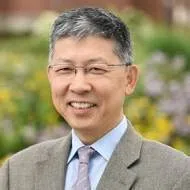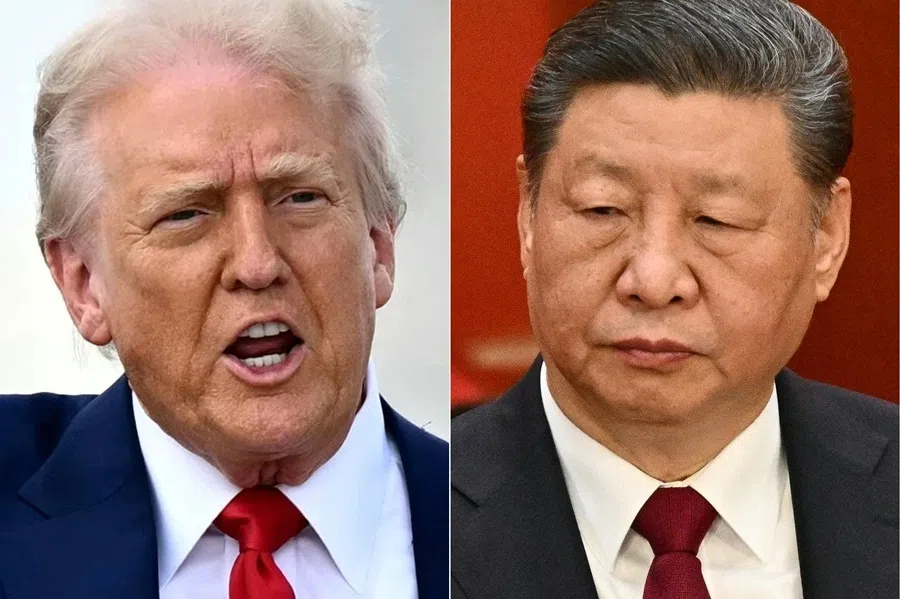Trump and Xi skipped Taiwan: Calm before the storm?
Xi Jinping and Donald Trump skipped Taiwan during their Busan summit, but no mention does not mean tensions are easing. The silence could be strategic, signalling a fragile calm before potential challenges in cross-strait relations. US academic Zhiqun Zhu gives his take.

Many observers were surprised that Taiwan was not mentioned by Chinese President Xi Jinping or US President Donald Trump during their summit in Busan, South Korea, on 30 October. Regardless of what really led to the leaders’ skipping of the Taiwan issue this time, it is naive to conclude that no news about Taiwan is good news. Now may well be the calm before the storm.
Taiwan is considered the “core” of China’s national interest and is invariably included in almost all high-level meetings between the US and China. Typically, China would reiterate its “one China” principle and its long-standing policy of peaceful unification while not ruling out the use of force to achieve unification. The US would state its “one China” policy and emphasise its opposition to any unilateral change to the status quo while expressing its concerns about frequent People’s Liberation Army (PLA) activities in the Taiwan Strait.
Such rote recitations may sound boring, yet they have helped keep this highly contentious issue from spinning out of control.
The talk can wait
Given the importance and sensitivity of Taiwan, one could only speculate on why it was absent from the latest summit. Here are several possible explanations.
First, the two leaders focused on trade-related issues and simply did not have time to address Taiwan. In fact, the total meeting time was only about 100 minutes, which included time for interpretation. The leaders had little time to go over all the important matters, such as fentanyl, soybeans, rare earths, port fees, high tech and TikTok.
Both Xi and Trump had tight schedules. Xi was paying an official visit to South Korea while attending the Asia-Pacific Economic Forum meetings there. Trump needed to be back in the White House to host a Halloween celebration. To save time, their meeting actually took place near the airport so that Trump could board Air Force One right after the meeting.
When pressed by journalists prior to the summit, Trump said vaguely, “Taiwan is Taiwan”, suggesting there was not much he could offer.

Second, Trump and Xi will have more time to address Taiwan and other difficult issues later. The two leaders have agreed to exchange visits in 2026, with Trump planning to go to China in April and Xi likely to return to the US soon afterwards.
Since the main purpose of the latest summit was to endorse the framework that was reached by the two negotiation teams in advance, the agenda was simple, and the two leaders both wanted it to be a success. Therefore, it was not a good idea to squeeze a hot button issue like Taiwan into the already full session.
Third, Trump is apparently unwilling to compromise on Taiwan and uninterested in linking Taiwan to other issues in US-China relations.
US Secretary of State Marco Rubio remarked before the summit that the US would not trade off Taiwan for a deal with China. It is possible that Trump already informed the Chinese in advance that he would not make any compromises on Taiwan. When pressed by journalists prior to the summit, Trump said vaguely, “Taiwan is Taiwan”, suggesting there was not much he could offer. And based on his interview with the CBS after the summit, he and Xi may have reached some understanding about Taiwan, as Trump claimed that the Chinese told him they would not move on Taiwan during his presidency.
Given Trump’s personality, the Chinese know that it would be counterproductive to push him on this matter. Both sides want to stabilise bilateral relations. It is clearly smart to shelf a thorny issue like Taiwan, for now.
China’s growing confidence
Finally, perhaps an increasingly confident China feels no need to discuss Taiwan with the US anymore.
Beijing always argues that Taiwan is an internal Chinese matter that brooks no foreign intervention. In practice, without cooperation from the US, it is very difficult to resolve the Taiwan dilemma. However, China realises that the US is unlikely to abandon Taiwan, and it is hard to persuade Trump or any US leader to publicly oppose Taiwan independence.
They [Taiwan’s DPP] fail to understand the global balance of power is changing, and even Trump is taking a conciliatory approach towards China now.

Therefore, China has focused on building its own strength. “It takes a good blacksmith to make good steel,” says a popular Chinese adage that Xi likes to cite. As China becomes more powerful, it feels less inclined to seek dialogue with the US over Taiwan.
Though the Taiwan Strait may seem quiet now, sober observers would agree that the area remains volatile and potentially explosive as official communication across the strait is closed and both sides seem prepared to change the status quo.
The Democratic Progressive Party (DPP) government in Taipei continues to advocate a new “two-state” theory, claiming that the two sides of the Taiwan Strait are two separate states, not subordinating to each other. This arguably has already crossed Beijing’s “one China” redline. The DPP and its supporters blindly believe that the US is firmly behind Taiwan if war breaks out in the Taiwan Strait. They fail to understand the global balance of power is changing, and even Trump is taking a conciliatory approach towards China now.
Beijing advances its unification agenda
Meanwhile, Beijing is moving forward with its own agenda of national unification. It has launched a new wave of international campaign to reassert sovereignty over Taiwan and shape global narratives about Taiwan, including publishing official accounts on the origins of the Taiwan issue, defending UN Security Council Resolution 2758, designating 25 October as the Commemoration Day of Taiwan’s Restoration, explaining how Taiwan can benefit from unification, and encouraging more countries like Singapore to publicly oppose Taiwan independence.
Most notably, according to the communique of the October 2025 Chinese Communist Party plenum, Beijing is “advancing” (推进) national unification now, not just “promoting” (促进) it.
Beijing has refrained from using force for two reasons — incomplete internal preparations and a view of Taiwanese as compatriots, even though many Taiwanese do not consider themselves Chinese now.

Beijing is enhancing military readiness to control or blockade Taiwan too. The PLA’s recent Victory Day parade demonstrates its growing capability and resolute determination to unify with Taiwan. Beijing still holds out the hope for a peaceful unification, but the DPP seems headstrong in pulling Taiwan further away from the framework of “one China” that both sides once agreed on. Beijing has refrained from using force for two reasons — incomplete internal preparations and a view of Taiwanese as compatriots, even though many Taiwanese do not consider themselves Chinese now.
Stormy seas in the Taiwan Strait
Looking ahead, the Taiwan Strait will be stormy. Due to lack of trust and communication, any miscalculation by Taipei, Washington or Beijing could lead to an escalation of conflict. Greater efforts are urgently needed by all parties concerned to handle this sensitive issue prudently and creatively. Beijing must continue to exercise patience and do its best to win the hearts and minds of the Taiwanese people. The DPP government should be realistic and ask itself whether cutting the links between the two sides and pursuing Taiwan independence are viable.
A final resolution of the cross-strait dispute eventually has to be reached by the two sides of the Taiwan Strait themselves. The US will not serve as a mediator, but it can facilitate bringing about lasting peace grounded in history and reality. In particular, Washington must resist the temptation of playing the Taiwan card against China in the US–China rivalry, and it should revamp its approach of arming Taiwan only without promoting cross-strait dialogue and leaving the door open for peaceful unification.





